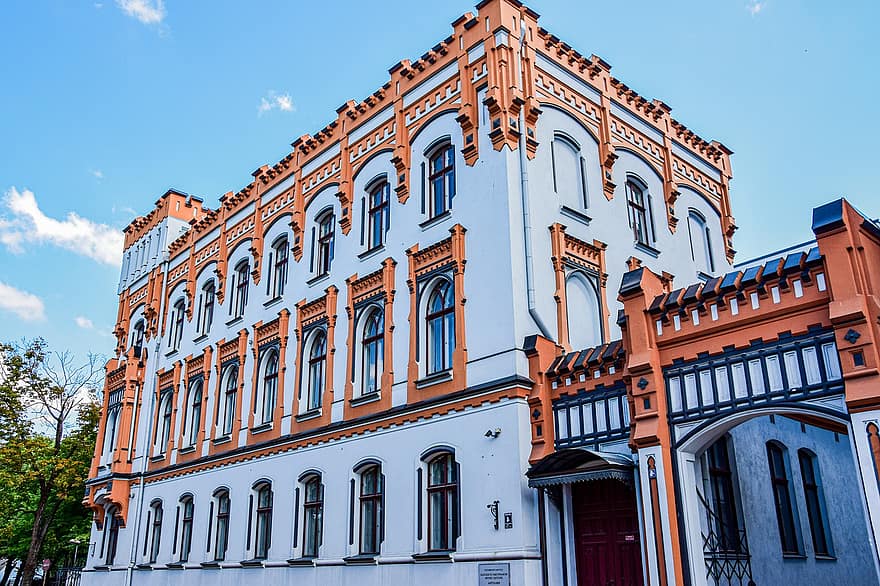Summary
– Active cracks
– Inert cracks
– Treatment of active and inert cracks
Cracks on facades are common pathologies. Before treating them, it must be determined whether the crack is active or inert. In the case of an active or inactive isolated crack, the crack can be treated as a joint and filled with flexible mastic. The treatment of cracks like the treatment of facade joints is a step in the preparatory work.
Active cracks
These are the cracks that continue to evolve. They are not stabilized. They are generally found at the building’s singular points, but they can be distributed over the entire facade. With relevant facade audits, active cracks greater than 0.2 mm, especially at masonry junctions, can be transformed into a flexible joint (expansion joint):
– Use an elastomeric mastic to fill the crack.
– This joint can be covered or not.
The main singular points of a building

| Name | Location/definition |
|---|---|
| Acroterions | These elements are located above the roof/terrace. They form the edge of walls or railings. |
| Linking/pulling | Metal reinforcement intended to stiffen horizontally or vertically a wall, a slab in a wall made of bricks, concrete blocks, stones… They prevent the building from dissociating. |
| Masonry joints | The boundary separating two distinct masonry zones. |
| Chimney stumps | Or “roof outlet”: the chimney flue outlet at the roof level. |
| Balconies, railings | Platform at floor height and projecting from the facade, equipped with a guardrail to protect people. |
| Caps | It is the part protecting a bay, a small cover in overhang. |
| Streamers | It is a protruding strip on the facade usually at the floor level division of the floors. |
| Lightens | The lightens are the facade elements between the floor level and the sill of an opening (window, door, skylight, etc.). |
| Window (bay) sills | It is a masonry or prefabricated piece located in the lower part of the window. |
Inert cracks
These are the stabilized cracks that no longer evolve.
Cracking and microcracks up to 0.2 mm can be left as they are. The associated coating is class I1.
Cracks up to 0.5 mm can be left as is; the associated coating is class I2.
Treatment of active and inert cracks
Treatment of active and inert cracks
Whatever the treatment, it must be:
– adapted to the type of material;
– adapted to the size and types of cracks;
– compatible with the coating.
Note: Follow the instructions for using the products and do not forget the usual safety precautions.
Table of treatment of active and inert cracks
| Active cracks | Inert cracks > 0.5 mm | |
|---|---|---|
| Treatments | – Brush and scrape cracks to remove dirt and loose parts. – Open the crack with the triangle. – Brush the open crack. – Fill with putty. – Allow to dry and re-fill if shrinkage occurs. – It is possible to place a framework/calicot/gallon locally over the cracks, especially at single points. – This calico is embedded in the veneer. – Application of a suitable Class I4 coating. | – Brush the surface to remove dirt and powdery materials. – Open the “V” crack with a triangle. – The opening of the crack allows for good adhesion of the filler later on. – Brush the opening and the bottom of the crack. – You can apply a fixative in the crack before the repair filler. – Fill the crack with a soft exterior sealant. – If necessary, cover with a facade covering adapted to the characteristics of the cracks. |
If you wish, you can get in touch with a specialist in facade restoration. They will be able to propose an estimate, be it for Facade Audits, Rope Access, Anchor Point Services, Rope Access Painting, and Cladding Auditing.
Pingback: Building and Construction: What is Printed Concrete | Building construction blog
Hi Mike,
Thanks for tis helpful and detailed article – it’s highly technical and very useful for those going out into the field to handle concrete crack repair jobs. I run a concrete contracting company out in Nashville, and there’s been a lot of activity in the past couple years with people buying homes. So much of the work we get is around fixing up slightly old homes around Nashville, and crack repair is a common question. I use this article as one of the main ones to train newly licensed concrete contractors on how to think about diagnosing and repairing cracks. They have been able to ask the homeowner questions, look at pictures, and go out to fix things on their own! Thanks again for bringing value to my business, much appreciated and would love to see more around concrete repair or even installation to this level of technical depth!
Pingback: How to Repair Wall Cracks | Building construction blog